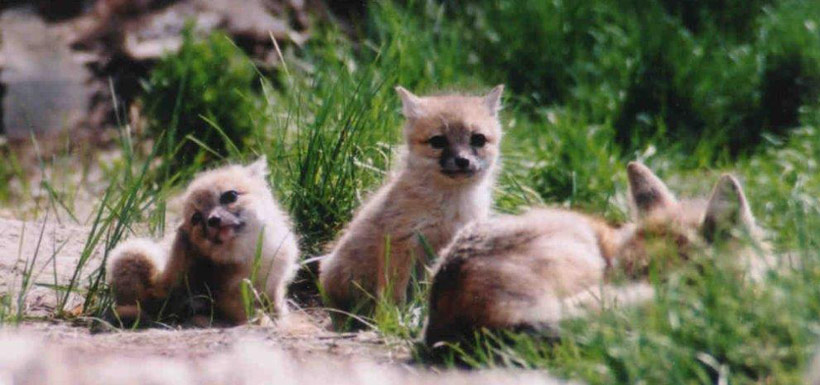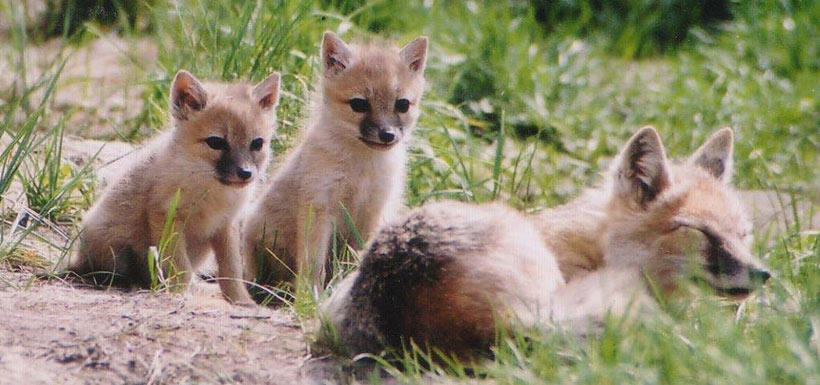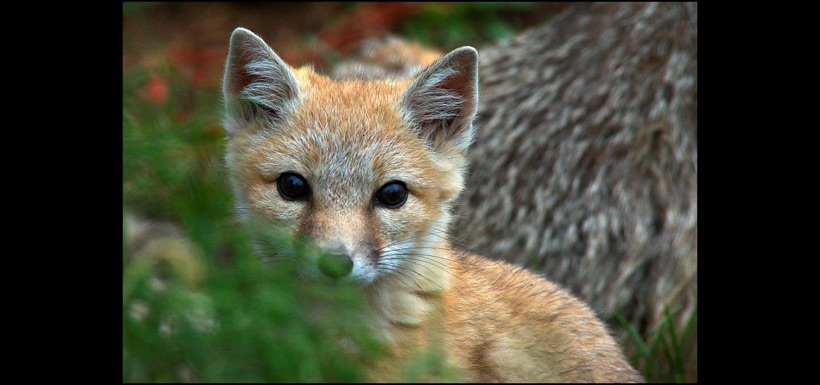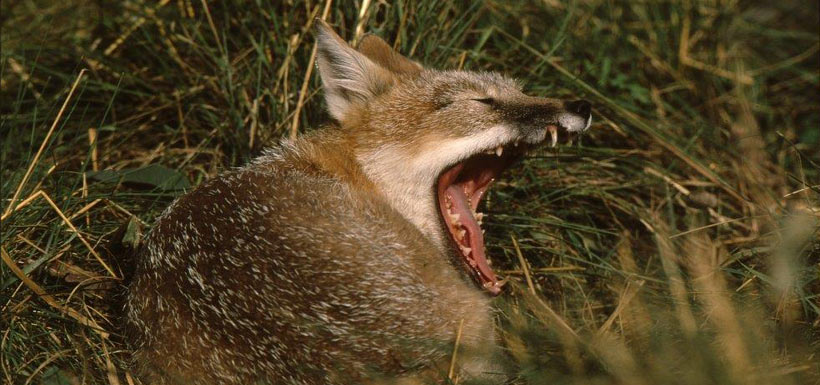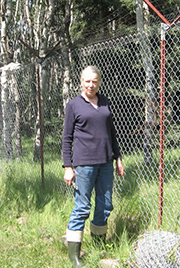Return of North America's tiniest fox
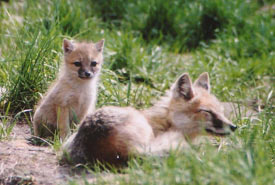
Swift fox cub and its mum (Photo by Catriona Matheson, Cochrane Ecological Institute)
Foxes are a part of most people’s lives, whether in fairy tales, as a figure of speech or as a part of the landscape. They are found in cities, in the countryside and in wildernesses of forest, desert and ice. The strange link between humankind and foxes has resulted in the eradication of fox species in some areas and the introduction of non-native fox species in others. As a result, foxes are found on every continent except Antarctica.
North America’s tiniest fox, the swift fox, is only found in the U.S. and Canada. For more than 7,000 years swift foxes have been an integral and spiritual part of world of the indigenous peoples of the Great Plains.
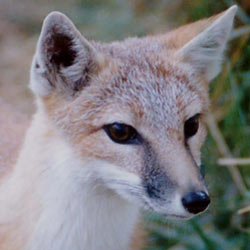
A charming swift fox cub. (Photo by Clio, Cochrane Ecological Institute)
At the Cochrane Ecological Institute, our swift foxes live under semi-wild conditions, protected on our 160 acres (65 hectares) of pristine natural mixed grass habitat. They are able to choose their own mates, dig their own dens and raise their cubs themselves. We learn who mated with whom from DNA analysis of their hair samples, and use cameras to watch what they do.
From late April to early June, as happened this year, cubs are born and they don’t appear at the den mouth for 14 days. When they do poke their heads out, their eyes still have a babyish blueness, their coats are woolly and brown and they are so small they can fit in the palm of your hand.
The swift fox’s diminutive size dictates its lifestyle. Being so small, the species’ survival depends on sociability, acting in unison if menaced and living and working together for the benefit of all. I have observed, as others have, pairs of swift foxes “mobbing” other carnivores near a den site. Rushing up to and swirling back from threat, they “dance like a butterfly, sting like a bee,” in the words of Muhammad Ali.
In fact, swift foxes have a wide vocabulary, including:
- warning barks when in jeopardy and "all clear" barks when the risk has gone;
- chuckles that indicate an adult has food for a cub;
- the usual growls and mutters made by all canid species; and
- a strange, mysterious whispering sound like ripping paper.
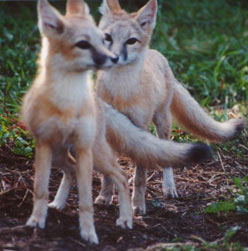
Cubs in August. (Photo by Clio, Cochrane Ecological Institute)
Cubs recognize them all, hiding at a warning bark, bouncing about outside the den when the "all-clear" has sounded, bowing, flattening ears and wagging tails when hummed or growled at, racing up to any adult that chuckles at them and sticking their noses into the corner of the adult animal’s mouth to persuade him or her to feed them.
At a month and a half, the cubs’ coats have turned from brown to golden and they are exploring around their den, pouncing on insects while either mum or dad take turns babysitting.
By the time late August rolls around they are going on hunting parties with a parent. Small birds are beginning their migration, grasshoppers and young rodents are on the move, so there is a lot of food available for a young, inexpert fox to hunt.
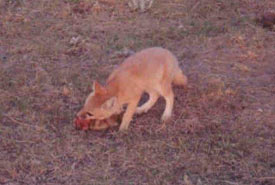
This cub was born in the reintroduction site to our foxes. It is shown here eating a ground squirrel. (Photo by Matt Carpenter, Cochrane Ecological Institute)
By October their thick, beautiful winter coats have grown and the boldest cubs have set up house themselves. Occasionally timid cubs stay home with mum and dad; maybe they are the clever ones! I don’t know, no one does, if overwintering with their parents will make it easier for the foxes to survive their first winter.
Like the plains buffalo and the plains wolf, the swift fox was to vanish before the inexorable advance of settlers, ranchers and the railway. But, unlike the plains wolf, swift fox would return to the world of grass they had been eradicated from; that return facilitated by the actions of two ranchers (stay tuned for our next blog post!).
Click on the pictures below to view this slideshow.

